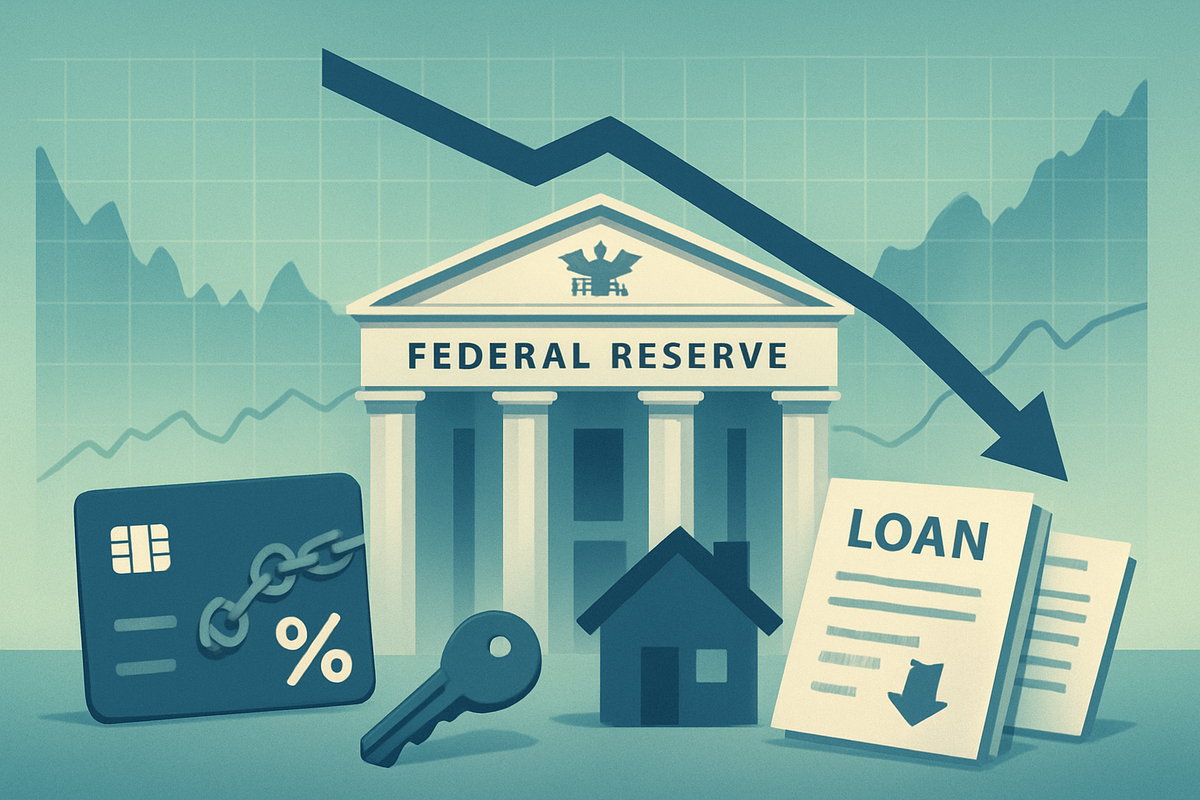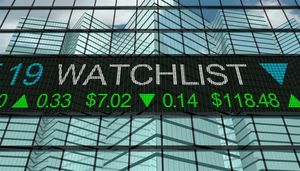
As of Monday, October 27, 2025, financial markets are on high alert, with a Federal Reserve interest rate cut widely anticipated this week, expected to be announced following the Federal Open Market Committee (FOMC) meeting concluding on Wednesday, October 29. This move, which would likely see a 25-basis-point reduction in the federal funds rate, lowering the target range to 3.75%-4.00%, marks a crucial juncture in the Fed's monetary policy strategy. It follows a similar rate cut in September, signifying the central bank's proactive stance in navigating evolving economic conditions.
This anticipated easing cycle is driven primarily by two converging factors: moderating inflation and a softening labor market. While recent data indicates inflation is cooling, concerns about a weakening labor market are mounting. The Fed's objective is to stimulate economic growth and support employment, aligning with its dual mandate of achieving maximum employment and price stability. This approach is often characterized as an "insurance cut," aiming to stabilize growth and prevent a significant economic downturn rather than aggressively igniting a new expansion.
Detailed Coverage: Navigating the Economic Crosscurrents
The impending rate cut, widely expected to be a 25-basis-point reduction, would bring the federal funds rate to its lowest level since December 2022. This decision is set against a backdrop of complex economic signals. On one hand, the September 2025 Consumer Price Index (CPI) data, released on October 24, showed a moderated inflationary trend, with the all-items CPI increasing by a cooler 3.0% year-over-year in September, with core inflation also showing a slight decline from August. Crucially, the "core" CPI, excluding volatile food and energy prices, increased by a more favorable 0.2% in September, its slowest monthly pace in three months. This moderation provides the Fed with justification for further easing.
On the other hand, a primary catalyst for the Fed's easing policy is growing concern over a softening labor market. Fed officials have expressed that downside risks to employment have increased, citing slowing job growth and rising unemployment insurance claims. Federal Reserve Chair Jerome Powell, whose statements on October 14 were interpreted as dovish, effectively laid the groundwork for an October rate cut. He characterized the September cut as a "risk management cut" to forestall further labor market slowing and suggested that the broader economic outlook "has not changed much since September." Other key players include Stephen Miran, the newest appointee to the Fed's board of governors, who has been a notable advocate for steeper rate cuts, even dissenting in the September meeting by voting for a 50-basis-point reduction.
The anticipation of an October cut has already sent ripples through financial markets. The CME Group FedWatch Tool indicates a 97% to 99% probability of a quarter-point cut, with economists at Deutsche Bank even characterizing it as a "done deal." Equity markets have reacted positively to the prospect of lower rates, with major U.S. indexes reaching new record highs, reflecting optimism that cheaper borrowing costs will bolster economic activity and corporate earnings. Bond yields have declined as investors embrace the prospect of cheaper capital, and mortgage rates had already slid over the summer in anticipation of the September cut, with further minor dips expected. Conversely, returns on Certificates of Deposit (CDs) and high-yield savings accounts are expected to decrease.
Impact on Borrowers and Public Companies: Winners and Losers Emerge
An anticipated Federal Reserve interest rate cut is poised to reshape the financial landscape for various types of borrowers and public companies, generally aiming to stimulate economic activity by making borrowing cheaper.
For credit card holders, a Fed rate cut could offer some relief, particularly for those carrying variable-rate balances. Most credit card interest rates are tied to the prime rate, which typically moves in conjunction with the federal funds rate. A rate cut would likely lead to a modest decrease in credit card APRs, easing repayment pressure. However, the impact may not be immediate or fully passed on by credit card companies, as they also consider risk and profitability.
Mortgage holders will see varied effects. Borrowers with Adjustable-Rate Mortgages (ARMs) are poised to see more direct and quicker benefits, as their rates are tied to short-term benchmarks that respond swiftly to Fed decisions. At their next reset, ARM rates are likely to decrease, resulting in lower monthly payments. For those with fixed-rate mortgages, payments will not change unless they refinance. However, a sustained series of rate cuts could make refinancing into a new, lower fixed-rate mortgage an increasingly attractive option for those with higher current rates.
Personal loan borrowers can also expect changes. It becomes cheaper for banks and lenders to borrow money, allowing them to offer new personal loans with better terms and lower interest rates. Existing variable-rate personal loans would likely see their APR drop, leading to reduced monthly payments, while fixed-rate personal loans would only be affected if refinanced.
Among public companies, a Fed rate cut generally creates "winners" and "losers." Homebuilders like D.R. Horton (NYSE: DHI) and Lennar (NYSE: LEN) are likely "winners" as lower mortgage rates stimulate housing demand, making homes more affordable and increasing sales volumes. Real Estate Investment Trusts (REITs) such as Realty Income Corp (NYSE: O) and NNN REIT Inc (NYSE: NNN) also benefit from reduced borrowing costs for their property acquisitions and developments, which can enhance profitability. Companies with significant floating-rate debt, including many small-cap companies and capital-intensive industries like Caterpillar (NYSE: CAT) or telecom giants such as Verizon Communications Inc (NYSE: VZ) and AT&T Inc (NYSE: T), could see their interest expenses decrease, improving profit margins. Technology and growth stocks, including Apple Inc. (NASDAQ: AAPL), Microsoft Corp (NASDAQ: MSFT), and Amazon.com Inc. (NASDAQ: AMZN), often benefit as lower rates reduce the discount rate applied to their future earnings, boosting their present value and stock prices. Consumer discretionary companies like Tesla Inc. (NASDAQ: TSLA), Starbucks Corp (NASDAQ: SBUX), and NIKE, Inc. (NYSE: NKE) could also see increased spending as consumers have more disposable income.
Conversely, banks like JPMorgan Chase & Co. (NYSE: JPM) and Bank of America Corp (NYSE: BAC) face a nuanced impact. While increased lending volume can be positive, lower rates can compress their net interest margins (NIM), potentially impacting profitability if lending volumes don't increase enough to offset the thinner margins. Companies relying on high deposit rates to attract funds may also struggle to maintain those rates, potentially impacting their ability to attract or retain deposits.
Wider Significance: A Global Rebalancing Act
The anticipated Federal Reserve interest rate cut in October 2025 represents a significant monetary policy shift with wide-ranging implications for domestic and global economies. This move fits into broader trends of managing inflation, supporting employment, and influencing global financial stability. While recent inflation moderation provides room for cuts, concerns about persistent inflation above the Fed's 2% target remain. Lowering interest rates aims to bolster the labor market by making it cheaper for businesses to borrow, invest, expand, and hire, thereby increasing consumer confidence and spending.
Globally, Fed policy decisions create significant ripple effects. Rate cuts typically weaken the U.S. dollar, making American exports more competitive and easing the burden of dollar-denominated debt for emerging markets. This can prompt capital to flow from the United States to higher-yielding international markets, potentially stimulating growth abroad. Other central banks may also consider similar easing measures to maintain their own economic stability.
Beyond direct interest rate adjustments, regulatory and policy implications are also at play. The ongoing U.S. government shutdown as of October 2025 is creating a "data drought," forcing the Fed to make decisions with incomplete information and increasing uncertainty. Alongside rate cuts, the Fed may also announce an end to its quantitative tightening (QT) program, marking a broader shift towards more accommodative monetary policy and aiming to inject more liquidity into the financial system. Political pressures, such as reported attempts to influence Fed appointments, also loom over the central bank's independence. Prolonged periods of low interest rates, while stimulating growth, can also fuel unsustainable asset price increases, posing risks to global financial stability.
Historically, Federal Reserve rate cuts have occurred in various economic contexts. The current cuts are characterized as "risk management" to prevent labor market slowing, rather than an immediate response to a severe economic crisis like the 2008 financial crisis. Past easing cycles have shown that equities generally perform better after gradual cuts, with defensive sectors often outperforming initially, and technology rebounding over time. However, historical precedents also offer cautionary tales, such as the potential link between early 2000s rate reductions and the subsequent housing bubble, highlighting the importance of calibrated and data-dependent policy.
What Comes Next: Scenarios and Strategic Pivots
As of October 27, 2025, the financial landscape is poised for significant shifts following the highly anticipated Federal Reserve interest rate cuts. In the short term, consumers are expected to benefit from reduced interest rates on credit cards, mortgages, and auto loans, while businesses will find it cheaper to borrow, potentially spurring investment. This can lead to stimulated consumer and business spending and a potential boost to the stock market, with growth stocks often outperforming. Conversely, cash yields on savings accounts and CDs are likely to decline.
Looking to the long term, the picture becomes more nuanced. While business investment, particularly in AI-related technologies, is expected to remain robust, real consumer spending is projected to slow in 2026. A persistent concern is that prolonged monetary easing could reignite inflationary pressures, potentially forcing the Fed to reverse course and modestly raise rates again by late 2026. An extended period of cheap money also risks inflating asset valuations beyond fundamentals, leading to potential asset bubbles.
Strategic pivots will be crucial for both businesses and consumers. Businesses, especially in e-commerce, should consider aggressive marketing and promotions, optimizing inventory, and leveraging cheaper credit for strategic expansion. However, prudent resource allocation and agile strategies are essential given economic uncertainties and ongoing challenges like tariffs. For consumers, refinancing existing loans (mortgages, credit cards, HELOCs) to take advantage of lower rates is a key opportunity. Considering big-ticket purchases like homes or cars may be more favorable, while re-evaluating cash holdings due to declining yields is also important.
Market opportunities include strong returns in U.S. equities (especially technology and growth sectors) and high-yield bonds in a non-recessionary easing environment. Existing bonds, particularly longer-duration instruments, could see price appreciation, and precious metals like gold may become more attractive. However, challenges include lower returns on cash and new bonds for income-oriented investors, the persistent risk of inflation resurgence, and potential market volatility or asset bubbles if the cuts are misjudged. The ongoing government shutdown further complicates the assessment of the true economic picture by limiting crucial data.
Two main scenarios emerge: an optimistic "soft landing", where rate cuts successfully stimulate the economy without reigniting inflation, leading to sustained growth and stable markets; or a pessimistic "stagflation" / "hard landing", where cuts prove insufficient to boost the labor market, or inflation stubbornly persists, forcing the Fed to reverse course, potentially leading to slow growth, high inflation, and market downturns.
Wrap-up: A Critical Juncture for the Market
The anticipated Federal Reserve interest rate cut, as of October 27, 2025, underscores the central bank's ongoing commitment to supporting economic stability in the face of evolving challenges. The Fed is attempting a delicate balancing act: providing enough stimulus to prevent further deterioration of the labor market and maintain economic growth, without inadvertently reigniting inflationary pressures that remain a concern due to factors like trade tariffs. The efficacy of these "insurance cuts" will depend on how successfully the Fed manages this tightrope walk, and its credibility hinges on navigating these conflicting objectives.
The longer-term impact could include a sustained period of lower borrowing costs, potentially fostering increased investment and consumption, but also requiring careful monitoring to avoid asset bubbles or a return of unchecked inflation. The market moving forward will be defined by this dynamic interplay.
For investors, vigilance is paramount in the coming months. It is crucial to re-evaluate asset allocation, focusing on fundamentals in equities, and considering fixed income opportunities. Savers will need to adjust strategies to contend with lower yields. Most importantly, investors must closely monitor available economic data, especially labor market indicators and inflation figures, and pay close attention to the Fed's "forward guidance" for signals on its future policy path. Be prepared for potential volatility, as a diversified portfolio and a long-term investment perspective can help navigate these fluctuations effectively. The coming months will reveal whether the Federal Reserve successfully threads the needle, achieving a "soft landing" by stimulating the economy without reigniting inflation, ultimately shaping the economic landscape for the foreseeable future.
This content is intended for informational purposes only and is not financial advice






